
From art to Meta-art (2)
In the end there is nothing left of the human figure but a small dot, representing what once was the head.
The head, home to the mind, the spirit, is disconnected from the rest of the body in its most inaccesible appearance.
In a painting made some years later, we see the human figure brought back to its absolute essentials, Trinity.
The body is represented by something that seems to consist of sheer energy and the mind by a sovereign dark blue dot.
Above the dot there is a kind of abstract crown, detached from the mind, but obviously in a most dynamic relationship with it... The immaterial world of ideas, coming from the mind?...
Lacina, oil on vanvas, 1989
Ribbon head, oil on canvas, 1990
The battle between abstraction and figuration finds its climax in the portrait. The human figure dissolves into abstracta, the geometrical abstract background is taking over.
Clearly the importance of the background in earlier work was already holding the promise of something much more worthwhile than what was portrayed in the front of these paintings...
After a serious, intuitive(!), battlle, that took years, Marianne Schuit, on her way of becoming the world’s first Meta-artist, obviously feels relieved that she has found a world of boundless expressive possibilities in the abstraction: she celebrates!
In the first full blown abstract paintings, she celebrates her newly found freedom. There is an atmosphere of almost childlike joy in Panta rhei and There once was.
But... Meta-art is already getting its foot between the door...
Yes, there is an almost childlike optimistic atmosphere in these early abstract paintings. But at the same time one senses the opposite: a highly cautious, utterly mature awareness...
Worlds apart, brought together as if they are not at all contradictory to each other... Meta-art is coming.
In the background, oil on canvas, 1991
Essentials.
What the metamorphosis from figuration to abstraction brings, is an overwhelming notion of what is absolutely essential.
Only what is truly essential stays. All the rest will not reach the canvas anymore.
Trinity, oil on canvas, 1994
Panta rhei, oil on canvas, 1991
1993 is to Marianne Schuit what 1907 was to Picasso.
In a way expected and still looking as if it has come out of the blue, there is Insight.
Is it light-hearted? Yes it is. No it is not.
Is it dead serious? Yes it is. No it is not.
Is it focused? Yes it is. No it is not.
Is it relieving? Yes it is. No it is not.
Is it ...? Yes it is. No it is not.
Insight is everything it is not. And it is not what it also is.
Meta-art is here.
There once was, oil on canvas, 1992
Insight, oil on canvas, 1993
Extremely intriguing is the small painting Break-through she painted a year before.
Circles already.
And something that escapes the rigidity of these circles. Not by breaking through them, but by ‘simply’ transcending them.
A nonsensical escape from what seems impossible to escape with the usual means.
The future Meta-artist already intuitively feels that she will be dependent on nonsensical measures to get where she needs to go: beyond the limiting possibilities of painting.
But... the grand paradox of Meta-art: you transcend the limitations of painting by... ‘just’ painting!
Break-through, oil on canvas, 1992
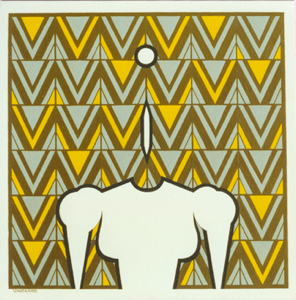
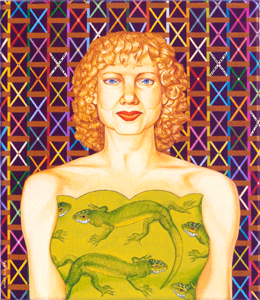
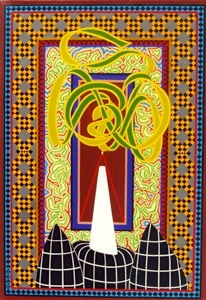
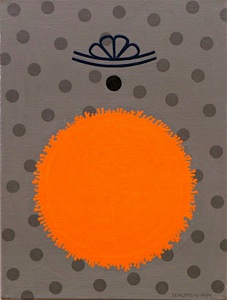
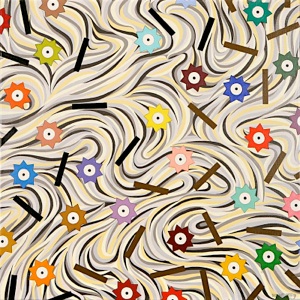
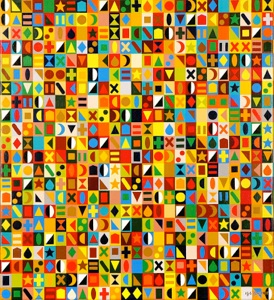


1993 is to the contemporary arts what 1907 was to modern art.
